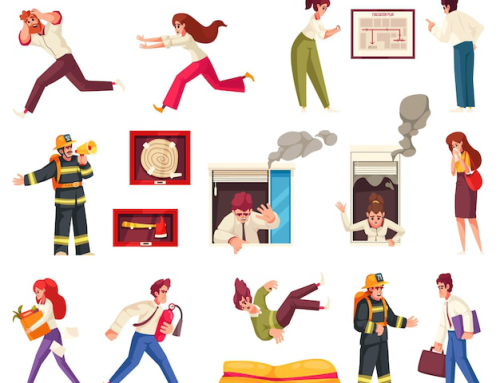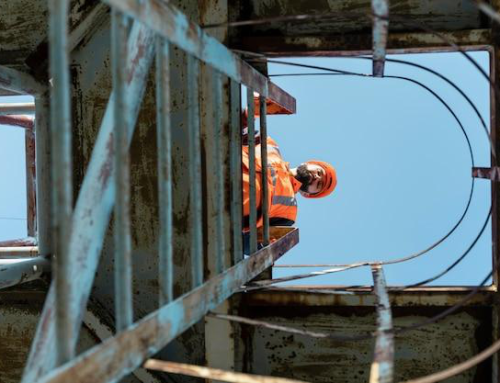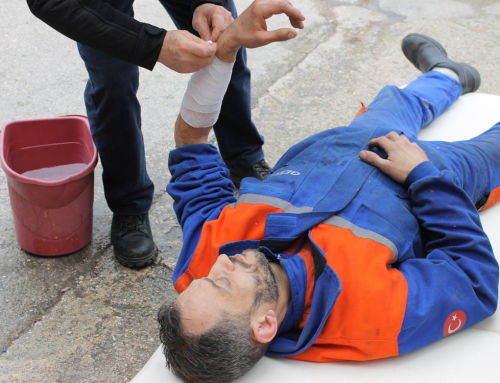Construction sites are dynamic environments where safety is crucial. Among various safety concerns, transportation emergencies pose a significant risk due to the presence of vehicles and machinery.
Whether it’s a sudden accident or an emergency evacuation, being prepared with the right skills and knowledge can make a critical difference. Let’s cover essential practices and training necessary to handle transportation emergencies on construction sites.
Understanding The Risks
Construction sites are filled with potential hazards, particularly involving the movement of vehicles. From heavy machinery to delivery trucks, the risk of accidents is significant. Common risks include:
- Collisions: Between vehicles and pedestrians or between vehicles.
- Rollovers: Particularly with heavy equipment like forklifts and cranes.
- Entrapment: Workers getting caught in or between vehicles and structures.
- Evacuations: Due to fire, structural collapse, or other emergencies requiring immediate action.
Addressing these risks requires a combination of safe driving practices, proper training, and a clear understanding of emergency protocols.
Safe Driving Practices on Construction Sites
Ensuring safety on construction sites begins with adhering to best practices for vehicle operation. These include:
1. Pre-Operational Checks
Conduct thorough inspections before operating any vehicle to ensure it is in safe working condition. Check brake functionality, tire pressure, and fluid levels.
2. Adherence to Speed Limits
Enforce strict speed limits tailored to the specific conditions of the construction site. Lower speeds reduce the likelihood of severe accidents.
3. Use of Spotters
Utilize spotters to guide vehicle operators, especially in areas with limited visibility. Clear communication between the operator and the spotter is crucial.
4. Safe Parking Practices
Vehicles should be parked on level ground with brakes engaged and wheels chocked if necessary. Avoid parking near excavation sites or where debris could fall. Use clear signage to indicate pedestrian pathways, vehicle routes, and hazard zones.
Responding to Accidents
Despite the best precautions, accidents can still occur. Having a well-defined response plan is essential for reducing harm and ensuring prompt, effective action.
- The first step is to assess the situation and ensure the safety of all individuals involved.
- Immediate medical attention should be provided to anyone injured. It’s crucial to promptly notify emergency services and provide them with accurate information about the incident.
- Documenting the accident scene through photos and notes can be valuable for future reference and investigation.
- Additionally, regularly reviewing and updating safety protocols can help prevent future incidents.
- Training employees in emergency response procedures is also vital for a coordinated and efficient reaction.
Explore courses such as BCCSA traffic control person training to empower employees to ensure safety at workplaces.
Immediate Actions
- Stop All Operations: Immediately halt all vehicle operations in the vicinity of the accident.
- Assess the Situation: Quickly evaluate the scene to determine the severity of injuries and damage.
- Call for Help: Contact emergency services and notify on-site first aid responders.
To ensure your workers can safely transport injured colleagues during emergencies, consider getting them enrolled in Metro Safety’s Transportation Endorsement training course.
First Aid And Medical Response
- First Aid: Administer first aid using skills learned in courses such as OFA 1 trainingand Occupational First Aid Level 2 in Surrey. These courses equip workers with the ability to handle a range of injuries until professional medical help arrives.
- CPR and AED Use: For severe injuries, particularly those involving cardiac arrest, immediate CPR and the use of an AED (Automated External Defibrillator) can be life-saving. Ensure workers are trained through courses like Level 2 First Aid Training in Surrey.
Documentation and Reporting
- Incident Reporting: Document the incident in detail, noting the time, location, involved parties, and a description of the events leading up to the accident.
- Witness Statements: Collect statements from witnesses to provide additional perspectives on the incident.
- Review and Revise Protocols: Analyze the incident to determine if existing safety protocols need adjustment to prevent future occurrences.
Evacuation Procedures
In certain emergencies, like fires or structural collapses, immediate evacuation is necessary. Efficient evacuation procedures are crucial for ensuring everyone’s safety.
It’s important to have clearly marked exit routes and conduct regular drills to familiarize everyone with the process. Additionally, having designated assembly points and conducting headcounts ensures that all individuals are accounted for.
The evacuation plan includes:
- Clear Evacuation Routes: Designate and mark clear evacuation routes that are free of obstructions.
- Assembly Points: Identify safe assembly points where workers should gather post-evacuation.
- Role Assignments: Assign specific roles to workers, such as fire wardens and first aid responders, to manage the evacuation effectively.
- Communication Systems: Ensure reliable communication systems are in place to alert workers of the need to evacuate.
Conducting Drills
Regular evacuation drills are essential to ensure that all workers are familiar with the evacuation procedures. These drills should be conducted under various scenarios to test preparedness and response.
Essential Training Courses
Training is the backbone of safety preparedness. Metro Safety Training offers a wide range of courses that equip workers with the necessary skills to handle transportation emergencies effectively.
First Aid Training
- First Aid Level 1, 2, and 3 Training in Surrey:Tailored to the needs of construction sites, this training covers essential first aid skills and advanced response techniques.
Confined Space Training
Confined spaces pose unique risks, and specialized training is crucial for workers who must enter these areas.
- Confined Space Training BC:Offers in-depth knowledge of confined space hazards, entry procedures, and emergency response.
- Confined Space Training Online:Provides flexibility for workers to complete the training at their convenience.
Fall Protection Training
Training in fall protection is vital for preventing accidents.
- Fall Protection Training:Educates workers on the proper use of fall protection equipment and techniques to prevent falls.
- Fall Arrest Training BC:Focuses on using fall arrest systems to protect workers from falls.
Importance Of Continuous Learning and Refresher Courses
Safety training should not be a one-time event. Continuous learning and regular refresher courses are necessary to keep skills sharp and updated with the latest safety protocols and regulations.
- Ongoing Training Programs: Implement regular training schedules to ensure all workers are up-to-date with their skills.
- Refresher Courses: Periodically require workers to retake courses like First Aid Level 2 Course and Fall Protection Trainingto reinforce their knowledge.
Since 2008, Metro Safety Training has been a trusted partner in providing essential safety education in Coquitlam, Burnaby, Vancouver, Surrey, and beyond.
Why Choose Metro Safety Training
- Experienced Instructors: Courses are led by seasoned professionals with extensive industry knowledge.
- Comprehensive Offerings: From first aid to confined space training, Metro Safety covers all aspects of workplace safety.
- Flexible Learning Options: Both in-person and online training options are available to suit diverse needs.
- Customized Solutions: Training can be tailored to meet the specific requirements of your workforce.
By focusing on safe driving practices, effective accident response, and robust evacuation procedures, coupled with comprehensive training, construction sites can significantly reduce the risks associated with transportation emergencies.
Ensure your construction site is prepared for any transportation emergency by equipping your workforce with the best safety training available at Metro Safety Training.
We offer a wide range of courses to meet your needs, including First Aid Levels 1, 2, and 3, confined space training in BC, and fall arrest training in BC. Contact us today to learn more about our courses and how we can help you create a safer work environment.














